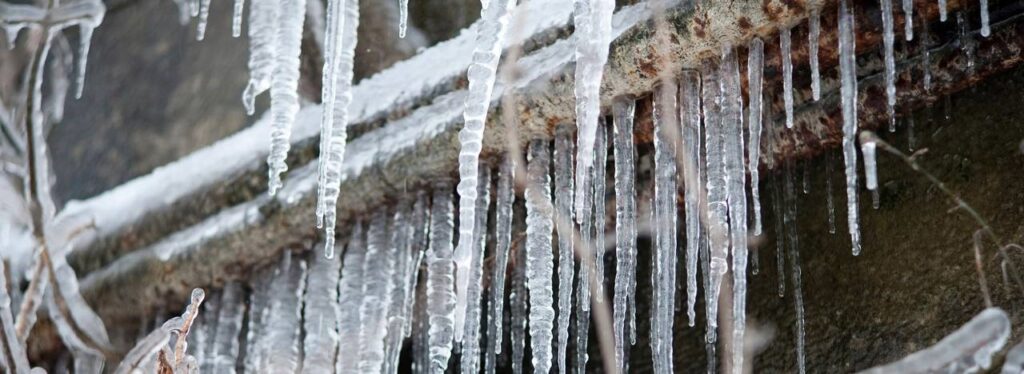This article in the next paragraphs involving Prevent Frozen Pipes is rather fascinating. Give it a try and draw your own ideas.

Winter can damage your pipes, especially by freezing pipelines. Here's just how to prevent it from taking place and what to do if it does.
Intro
As temperatures decrease, the danger of icy pipes boosts, possibly causing pricey fixings and water damage. Understanding exactly how to prevent icy pipelines is vital for home owners in cool climates.
Avoidance Tips
Protecting vulnerable pipelines
Cover pipes in insulation sleeves or make use of warm tape to protect them from freezing temperature levels. Focus on pipelines in unheated or outside locations of the home.
Home heating strategies
Maintain indoor rooms sufficiently heated up, specifically locations with pipes. Open up cupboard doors to enable cozy air to distribute around pipes under sinks.
Exactly how to determine frozen pipes
Look for decreased water circulation from taps, unusual odors or sounds from pipelines, and noticeable frost on subjected pipes.
Long-Term Solutions
Structural changes
Take into consideration rerouting pipes away from outside walls or unheated areas. Include additional insulation to attics, cellars, and crawl spaces.
Upgrading insulation
Buy high-grade insulation for pipelines, attics, and wall surfaces. Proper insulation aids maintain regular temperatures and lowers the danger of frozen pipelines.
Safeguarding Exterior Plumbing
Garden pipes and outdoor taps
Separate and drain yard pipes prior to winter months. Install frost-proof faucets or cover exterior taps with shielded caps.
Understanding Frozen Pipelines
What causes pipes to ice up?
Pipelines ice up when revealed to temperatures below 32 ° F (0 ° C) for extended periods. As water inside the pipes freezes, it expands, putting pressure on the pipeline wall surfaces and possibly creating them to break.
Dangers and problems
Frozen pipes can result in supply of water disruptions, residential property damage, and expensive repairs. Ruptured pipelines can flood homes and cause considerable structural damage.
Indicators of Frozen Pipeline
Identifying icy pipes early can stop them from rupturing.
What to Do If Your Pipes Freeze
Immediate activities to take
If you suspect icy pipes, keep taps available to relieve stress as the ice thaws. Use a hairdryer or towels taken in hot water to thaw pipes gradually.
Conclusion
Stopping icy pipes needs aggressive steps and fast feedbacks. By understanding the causes, indicators, and safety nets, homeowners can safeguard their plumbing throughout cold weather.
5 Ways to Prevent Frozen Pipes
Drain Outdoor Faucets and Disconnect Hoses
First, close the shut-off valve that controls the flow of water in the pipe to your outdoor faucet. Then, head outside to disconnect and drain your hose and open the outdoor faucet to allow the water to completely drain out of the line. Turn off the faucet when done. Finally, head back to the shut-off valve and drain the remaining water inside the pipe into a bucket or container. Additionally, if you have a home irrigation system, you should consider hiring an expert to clear the system of water each year.
Insulate Pipes
One of the best and most cost-effective methods for preventing frozen water pipes is to wrap your pipes with insulation. This is especially important for areas in your home that aren’t exposed to heat, such as an attic. We suggest using foam sleeves, which can typically be found at your local hardware store.
Keep Heat Running at 65
Your pipes are located inside your walls, and the temperature there is much colder than the rest of the house. To prevent your pipes from freezing, The Insurance Information Institute suggests that you keep your home heated to at least 65 degrees, even when traveling. You may want to invest in smart devices that can keep an eye on the temperature in your home while you’re away.
Leave Water Dripping
Moving water — even a small trickle — can prevent ice from forming inside your pipes. When freezing temps are imminent, start a drip of water from all faucets that serve exposed pipes. Leaving a few faucets running will also help relieve pressure inside the pipes and help prevent a rupture if the water inside freezes.
Open Cupboard Doors
Warm your kitchen and bathroom pipes by opening cupboards and vanities. You should also leave your interior doors ajar to help warm air circulate evenly throughout your home.

I am very eager about Preventing and dealing with frozen pipes and I hope you liked the blog posting. Are you aware of someone else who is excited about the niche? Be sure promote it. We truly appreciate reading our article about Helpful Tips to Prevent Frozen Pipes this Winter.
Estimating